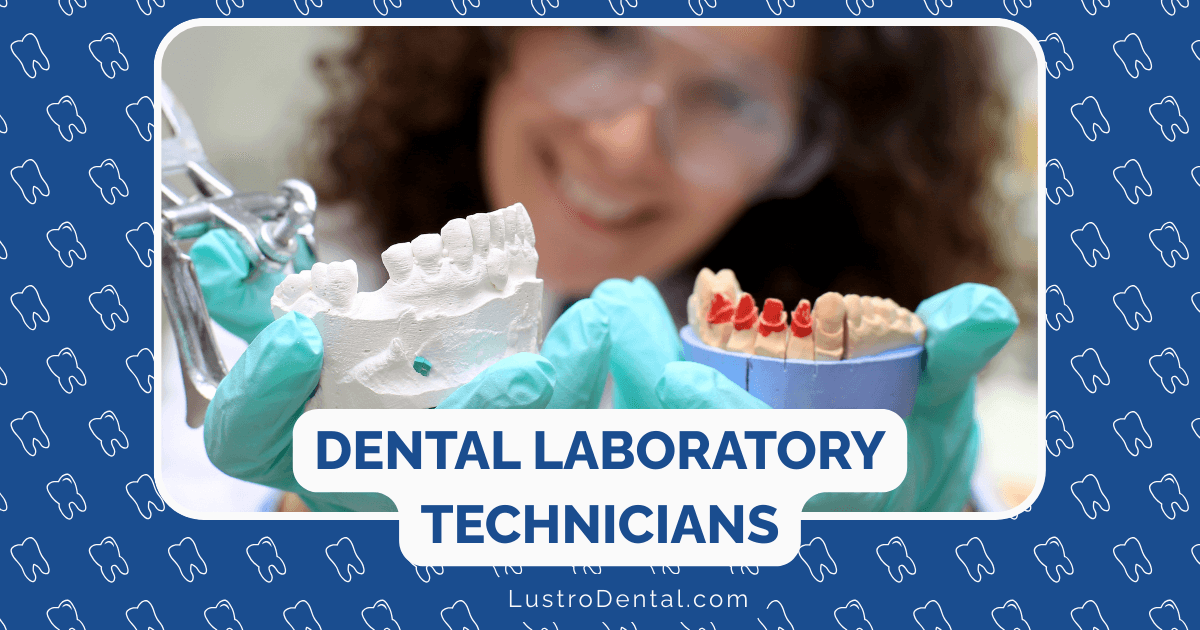Front Office Team: How They Advocate for Patients with Insurance and Scheduling

When you visit a dental office, your first and last interactions are typically with the front office team—those friendly professionals who greet you, handle your paperwork, and coordinate your appointments. While their smiles and welcoming demeanor are immediately apparent, what often goes unnoticed is their crucial role as patient advocates, particularly when it comes to navigating the complexities of dental insurance and creating convenient scheduling solutions.
Behind the scenes, these skilled professionals work diligently to ensure you receive the care you need while maximizing your benefits and minimizing your out-of-pocket expenses. This comprehensive guide explores the vital ways dental front office teams advocate for patients, making them essential partners in your oral healthcare journey.
The Evolving Role of the Dental Front Office Team
The responsibilities of dental front office staff have evolved significantly in recent years, transforming from basic receptionists to sophisticated patient advocates and practice representatives.
Today’s Front Office Professionals
According to DentistryIQ’s 2025 Front Office Salary Report, modern dental front office teams now handle:
- Complex insurance verification and benefits coordination
- Patient financial counseling and treatment planning support
- Digital patient communication across multiple platforms
- Practice marketing and reputation management
- Detailed scheduling optimization
- Electronic health record management
- Compliance with ever-changing healthcare regulations
Dr. Sarah Johnson, a practice management consultant, explains: “Today’s dental front office team members are far more than appointment schedulers. They’re financial coordinators, patient educators, and communication specialists who often determine whether a patient proceeds with recommended treatment or walks away confused and uncertain.”
This evolution has positioned front office staff as critical advocates who help patients navigate the often confusing world of dental care financing and scheduling.
Insurance Advocacy: Maximizing Patient Benefits
One of the most significant ways front office teams advocate for patients is through their expert handling of dental insurance matters.
Comprehensive Insurance Verification
According to Teero’s guide on dental insurance verification, thorough verification involves:
- Confirming active coverage status and effective dates
- Determining annual maximums and remaining benefits
- Identifying waiting periods for specific procedures
- Verifying coverage percentages for different treatment categories
- Checking frequency limitations for services like cleanings and X-rays
- Confirming deductible amounts and whether they’ve been met
- Identifying any exclusions or limitations specific to the patient’s plan
This detailed verification—typically performed 3-5 days before routine appointments and 7-10 days before major treatments—helps prevent unexpected costs and treatment delays.
“Insurance verification is the foundation of patient financial advocacy,” notes Jennifer Williams, an experienced dental office manager. “When we thoroughly understand a patient’s coverage, we can help them maximize their benefits and minimize surprises.”
Translating Insurance Jargon
Dental insurance policies are notoriously complex, filled with technical terms and conditions that can confuse even the most diligent patients. Front office teams serve as translators, breaking down complex insurance language into understandable information.
This translation service includes:
- Explaining coverage percentages: Clarifying what “80% coverage” actually means for the patient’s out-of-pocket costs
- Demystifying frequency limitations: Helping patients understand how often their plan covers specific procedures
- Clarifying annual maximums: Explaining how these caps affect treatment planning and timing
- Interpreting exclusions and waiting periods: Identifying when certain treatments might not be covered and why
- Explaining coordination of benefits: Helping patients with multiple insurance plans understand how they work together
By translating these complex concepts into plain language, front office teams empower patients to make informed decisions about their dental care.
Strategic Treatment Timing
Knowledgeable front office staff help patients maximize their insurance benefits through strategic treatment timing:
- Year-end planning: Scheduling major treatments before annual benefits expire
- Phased treatment approaches: Dividing extensive work across benefit periods to maximize coverage
- Coordination with medical insurance: Identifying when certain procedures might be covered under medical rather than dental insurance
- Waiting period management: Scheduling elective procedures after waiting periods have been satisfied
Lisa Martinez, a dental insurance coordinator, shares: “One of my most rewarding moments was helping a patient save over $2,000 by strategically scheduling their implant procedure. By completing the extraction in December and the implant placement in January, we were able to use two years of benefits for their treatment.”
Predetermination and Preauthorization
Front office advocates often submit predetermination requests to insurance companies before treatment begins, providing patients with:
- Written confirmation of expected coverage
- Detailed estimates of out-of-pocket expenses
- Documentation to support appeals if claims are later denied
- Peace of mind regarding financial commitments
This proactive approach helps patients budget appropriately and reduces financial anxiety associated with dental treatment.
Claim Submission and Follow-Up
According to Dentistry Support, over 30% of dental claims are initially rejected due to missing information, and the average claim processing time across most PPO plans is 17-22 days. Dedicated front office teams advocate for patients by:
- Submitting clean, accurate claims with proper documentation
- Following up on delayed claims every 10 days (industry best practice as of 2025)
- Appealing inappropriately denied claims with supporting documentation
- Keeping patients informed about claim status and resolution efforts
This persistent follow-up ensures patients receive the benefits they’re entitled to and aren’t incorrectly billed for covered services.
Patient Education on Insurance Optimization
Beyond handling immediate insurance needs, front office advocates educate patients on how to optimize their dental benefits:
- Explaining the importance of preventive care that’s typically covered at 100%
- Helping patients understand how to evaluate dental insurance options during open enrollment
- Providing guidance on flexible spending accounts (FSAs) and health savings accounts (HSAs)
- Offering insights on supplemental dental discount plans when appropriate
This educational component empowers patients to make better long-term decisions about their dental care financing.
Scheduling Advocacy: Creating Convenience and Access
The second major area where front office teams advocate for patients is through thoughtful, patient-centered scheduling practices.
Convenience-Focused Appointment Options
According to My Social Practice, patients in 2025 prioritize convenience, speed, and seamless experiences in their dental care. Front office teams respond to these needs by offering:
- Extended hours: Early morning, evening, or weekend appointments for busy professionals
- Family block scheduling: Coordinating appointments for multiple family members on the same day
- Emergency availability: Creating buffer times in the schedule for urgent care needs
- Virtual consultations: Offering remote options for initial consultations and follow-ups
- Consolidated treatment: Scheduling multiple procedures in single visits when appropriate
“Our scheduling philosophy centers on patient convenience,” explains Robert Thompson, a dental practice administrator. “We recognize that dental appointments compete with work, school, and family obligations, so we design our schedule to accommodate patients’ lives rather than expecting them to accommodate us.”
Personalized Scheduling Approaches
Effective front office teams recognize that scheduling is not one-size-fits-all and tailor their approach to individual patient needs:
- Preference-based scheduling: Maintaining records of each patient’s preferred days, times, and providers
- Communication style matching: Using patients’ preferred contact methods (text, email, phone) for scheduling
- Consideration of special needs: Allocating extra time for patients with anxiety, mobility issues, or other special requirements
- Reminder customization: Adjusting reminder timing and frequency based on individual patient history and preferences
This personalized approach demonstrates respect for patients’ time and circumstances, building trust and loyalty.
Minimizing Wait Times and Delays
Front office advocates work diligently to respect patients’ time by:
- Realistic scheduling: Allocating appropriate time for procedures to prevent running behind
- Buffer time integration: Building short breaks into the schedule to accommodate unexpected situations
- Proactive communication: Alerting patients promptly if delays occur
- Digital check-in options: Streamlining arrival procedures to reduce waiting room time
These efforts acknowledge the value of patients’ time and demonstrate the practice’s commitment to service excellence.
Facilitating Urgent Care Access
When dental emergencies arise, front office teams serve as critical advocates by:
- Asking appropriate questions to assess the urgency of the situation
- Providing interim care instructions until the patient can be seen
- Reworking schedules to accommodate same-day emergency appointments
- Coordinating with specialists when immediate referrals are needed
- Following up after emergency care to ensure resolution and continued treatment
This advocacy ensures patients receive timely care when they need it most, often preventing more serious complications.
The Technology-Enhanced Front Office Advocate
Modern front office advocacy is increasingly supported by sophisticated technology tools that expand capabilities while maintaining the human touch.
AI-Assisted Patient Communication
According to My Social Practice, 87% of customers are now comfortable using AI voice agents for inquiries, and 60% of customer service leaders are considering AI-powered phone assistants. These technologies help front office teams by:
- Providing 24/7 availability for appointment scheduling and basic questions
- Automating appointment reminders and confirmation
- Offering instant responses to common patient inquiries
- Supporting multilingual communication
- Freeing staff to focus on complex patient advocacy tasks
“AI doesn’t replace our front office team—it enhances their capabilities,” notes Dr. Michael Chen, a technology-focused dentist. “By handling routine tasks, AI allows our team to dedicate more time to complex insurance issues and personalized patient care.”
Digital Patient Portals and Mobile Apps
Patient portals and mobile apps extend the front office team’s advocacy by providing:
- Secure access to insurance information and coverage details
- Self-scheduling options for routine appointments
- Digital form completion prior to appointments
- Convenient bill payment and financing application
- Secure messaging with the dental team
These digital tools complement the front office team’s efforts, providing patients with 24/7 access to information and services.
Integrated Insurance Verification Systems
Advanced insurance verification platforms help front office teams advocate more effectively by:
- Automating eligibility checks across multiple carriers
- Providing real-time benefit information
- Calculating patient portions with greater accuracy
- Identifying potential coverage issues before appointments
- Maintaining detailed documentation of verification activities
These systems reduce errors and free staff to focus on resolving complex insurance issues that require human intervention.
Challenges in Front Office Advocacy
Despite their dedication, front office teams face significant challenges in their advocacy efforts:
Increasing Insurance Complexity
According to DentistryIQ, front office staff report “increasing difficulty working with insurance and higher denial rates” as major challenges in 2025. This complexity stems from:
- Frequent changes to plan provisions and coverage policies
- Complex networks with umbrella administration arrangements
- Increasing documentation requirements
- Longer processing times and more frequent denials
- Reduced customer service support from insurance companies
These challenges require front office advocates to be increasingly persistent and knowledgeable to secure proper patient benefits.
Staffing and Training Constraints
The Dr. Bicuspid reports that “a shortage of trained front office workers has made accurate insurance verification challenging since the COVID-19 pandemic.” This shortage affects patient advocacy through:
- Increased workloads for existing staff
- Less time available for complex advocacy tasks
- Challenges in maintaining up-to-date insurance knowledge
- Difficulty providing consistent patient communication
Despite these constraints, dedicated front office teams continue to prioritize patient advocacy, often going above and beyond to ensure patients receive the care and benefits they deserve.
Balancing Efficiency and Personalization
In busy practices, front office teams must balance efficiency with personalized attention:
- Managing high call volumes while providing individualized service
- Completing thorough insurance verifications within time constraints
- Maintaining schedule efficiency while accommodating patient needs
- Implementing technology solutions without losing the human touch
This balancing act requires exceptional organizational skills and a deep commitment to patient advocacy.
The Patient’s Role: Partnering with Your Front Office Advocates
While front office teams work diligently to advocate for patients, the most successful outcomes occur when patients actively partner in the process.
How to Support Your Front Office Advocates
To maximize the effectiveness of your front office team’s advocacy efforts:
- Provide complete, accurate insurance information: Including subscriber details, policy numbers, and updates when coverage changes
- Respond promptly to requests for additional information
- Keep scheduled appointments or provide adequate notice for cancellations
- Ask questions when you don’t understand insurance or financial information
- Express appreciation for advocacy efforts, which often occur behind the scenes
This partnership approach enhances the front office team’s ability to secure optimal outcomes for your dental care.
Questions to Ask Your Front Office Advocates
To better understand and utilize your front office team’s advocacy capabilities, consider asking:
- “Can you help me understand what my insurance covers for this recommended treatment?”
- “Are there any alternative treatments that might have better coverage?”
- “How can we time my treatment to maximize my insurance benefits?”
- “What documentation do you need from me to help ensure my insurance claim is approved?”
- “What are my options if my insurance doesn’t cover this procedure?”
These questions open the door to valuable advocacy support that might otherwise go unutilized.
The Future of Front Office Advocacy
Looking ahead, several trends are shaping the evolution of front office advocacy:
Increasing Specialization
Many practices are moving toward specialized roles within the front office team:
- Insurance Coordinators: Focused exclusively on verification, claims, and patient financial counseling
- Patient Experience Managers: Dedicated to enhancing communication and convenience
- Virtual Care Coordinators: Specializing in telehealth and remote consultation support
- Financial Advocates: Concentrating on helping patients access care financing options
This specialization allows for deeper expertise in each advocacy area.
Hybrid Service Models
According to Dentaltown, practices increasingly employ hybrid models that combine:
- In-office front desk staff for personal interactions
- Virtual receptionists for extended hours coverage
- AI-powered systems for routine tasks and initial inquiries
- Outsourced specialists for complex insurance verification
These hybrid approaches expand advocacy capabilities while managing operational costs.
Enhanced Transparency Tools
Emerging technologies are enabling greater transparency in insurance and scheduling:
- Real-time insurance benefit calculators
- Interactive treatment plan visualizers with cost breakdowns
- Predictive AI that anticipates insurance coverage issues
- Automated appeals systems for denied claims
- Dynamic scheduling platforms that optimize appointment timing
These tools further empower front office teams to advocate effectively for patients.
Conclusion: The Unsung Heroes of Dental Care
The dental front office team represents the essential bridge between clinical excellence and patient experience. Their advocacy efforts—often invisible to patients—can make the difference between treatment acceptance and postponement, between financial peace of mind and anxiety, between convenient access and frustrating delays.
As Jennifer Davis, a long-time dental office manager, reflects: “We may not provide direct clinical care, but we remove the barriers that might otherwise prevent patients from receiving that care. When a patient proceeds with needed treatment because we’ve helped them understand their coverage, or when they express relief at finding an appointment time that works with their busy schedule—those moments remind us of the importance of our advocacy role.”
The next time you visit your dental office, consider expressing appreciation for these dedicated professionals who work tirelessly behind the scenes to maximize your benefits, minimize your costs, and create a scheduling experience that respects your time and needs. Their commitment to patient advocacy truly makes them essential partners in your oral healthcare journey.







